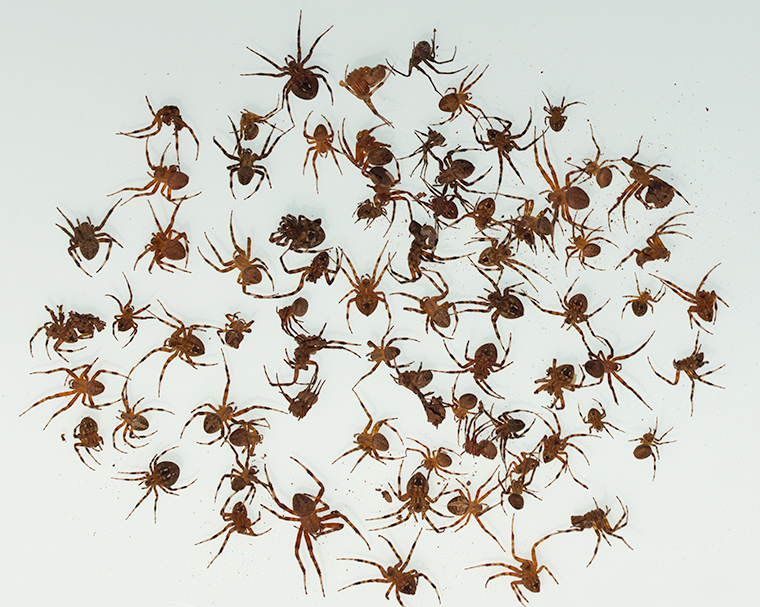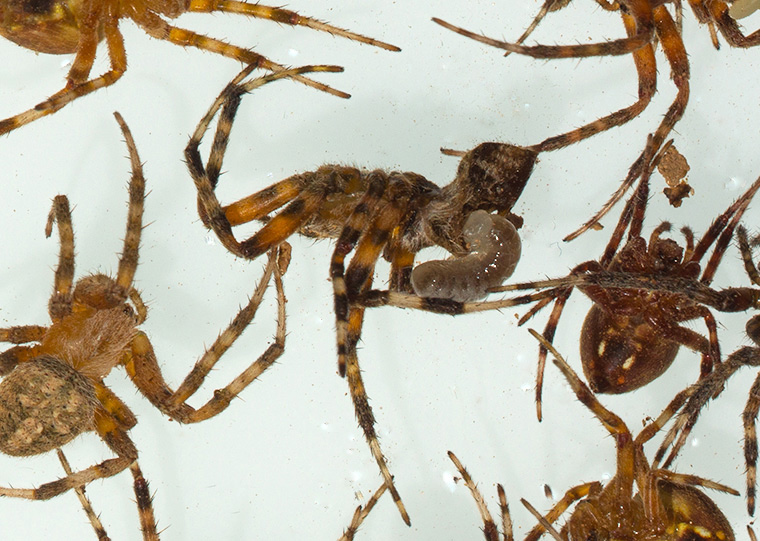For general information about Organ Pipe Mud Wasps (Trypoxylon politum), you should refer to my earlier post showing general features of nest construction and pictures of the wasps at work. As the nest is being constructed, the wasps stock it with spiders which they have carefully collected and stung in such a way as to paralyze, but not kill them. An egg is laid on each spider, and when the eggs hatch, the larvae eat the spider and eventually pupate and transform into an adult wasp.
I recently had to remove an Organ Pipe Mud Wasp nest from our front porch. The nest had been recently constructed and it was well packed with spiders. The nest consisted on one main mud tube, and I counted 75 spiders in the tube. I lost track of a few during the process, so there were probably about 90 spiders in all.
I think most of these are juveniles of Neoscona sp. This type of spider is quite common around our house. For more information about Neoscona see my earlier post.
This photograph shows a larva in the process of consuming one of the paralyzed spiders. I can not be completely sure that this is a mud wasp larva, however. During nest construction, a number of Tachinid flies are usually lurking about. They endeavor to enter the wasp nest during construction and lay one of their eggs on a spider. The fly egg hatches first and begins to eat the spider before the wasp larva gets underway. Look for a future post on Tachinid flies vs. Organ Pipe Mud Wasps.


